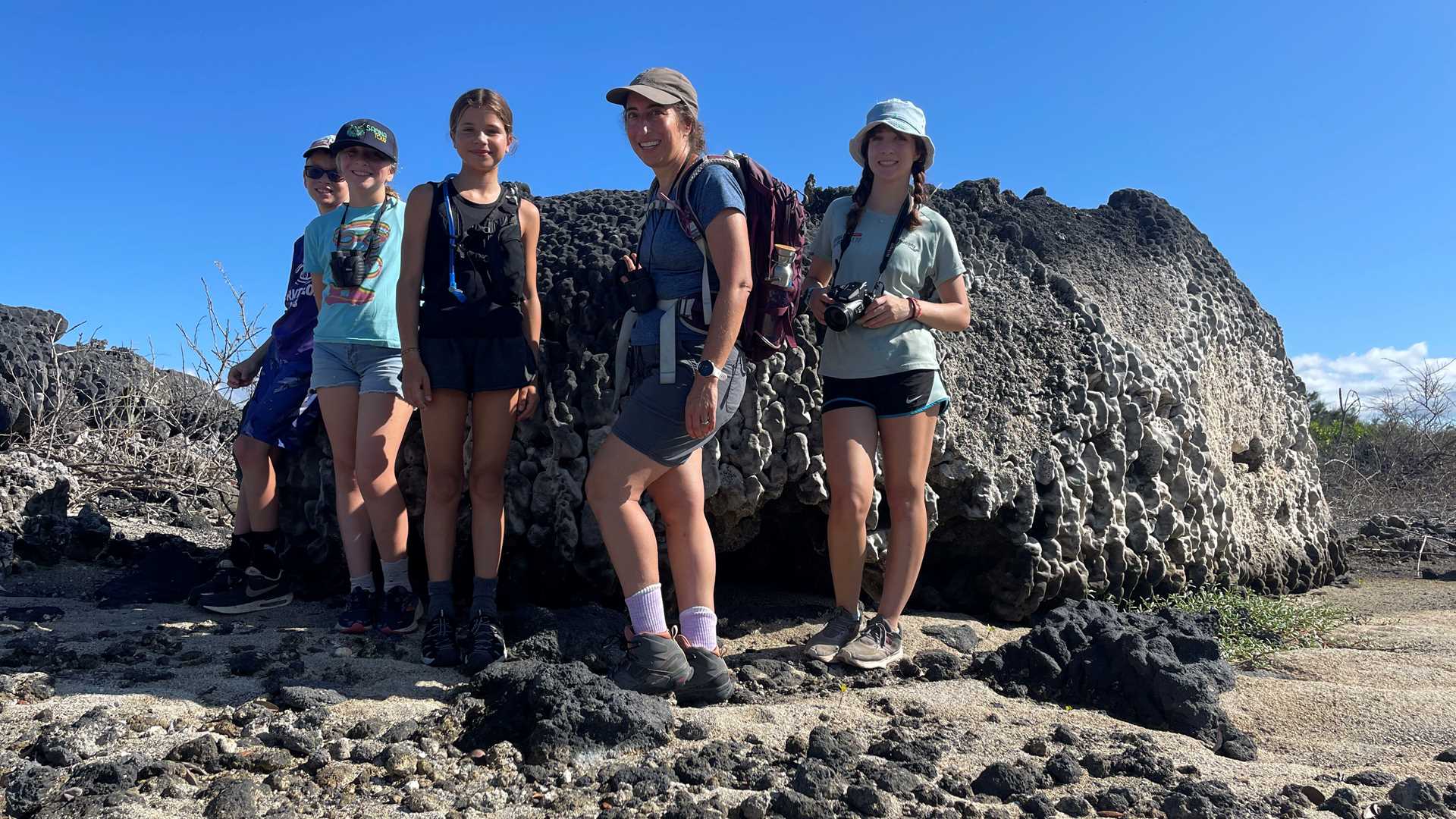Isabela Island is the largest in the Galapagos archipelago, and there’s lots to see and do. In the morning, right after breakfast, guests had the choice between a long invigorating hike to view the coral heads (uplifted in 1954), or a shorter hike with more relaxation. During both hikes we could observe several local species, including finches, land iguanas, giant tortoises, and flycatchers.
Our younger explorers enjoyed some swimming time at the beach. We also guided them on a little learning experience, as we collected plankton to later observe under the ship’s microscope.
The afternoon was full of excitement as well. Many activities were offered, such as kayaking and paddleboarding. Of course, snorkeling in the Galapagos is an especially good choice, and many guests enjoyed this option.
Later in the afternoon, our guests embarked on another invigorating hike; this time we visited a lookout where we admired several of the volcanoes that form Isabela Island. Darwin Lake is one of the main attractions of this visitor site. This saltwater lake completes an amazing landscape — visiting during the last hours of sunlight is a must for those interested in photography. Other guests enjoyed a Zodiac ride to look for the wildlife that is unique to the western side of the islands. Whichever path we chose, the sunset today was something to remember.







